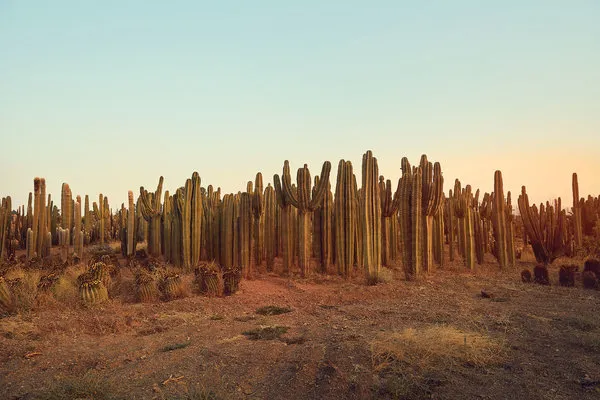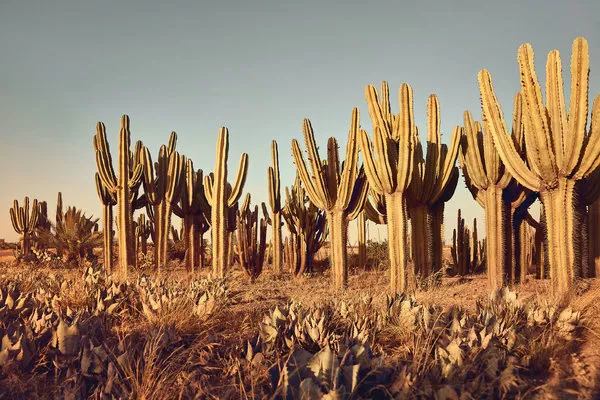
Twenty minutes beyond the plissé mud walls and souks of Marrakesh’s ancient medina, miles past the 1920s-era Guéliz neighborhood and its new Yves Saint Laurent museum, lies a vast no-man’s land of telephone towers and dust. Then, on a chain-link fence that seems to guard nothing, a hand-lettered sign pointing down a rocky path: ‘‘Cacti.’’
Cactus Thiemann, a 17-acre cactus nursery, rises from the dry dirt like a vegetable garden on Mars or a Ridley Scott fever dream. Stadium-size swaths of each variety — more than 150 in all — stand in perfect rows, stretching into the horizon. The garden was founded in the mid-1960s by Hans Thiemann, a then-38-year-old agricultural engineer in Bremen, Germany, whose family had for generations nurtured a passion for the slow-growing spiny succulents. He’d grown weary of cultivating them under greenhouse conditions, and the Moroccan desert was convenient to Europe — Thiemann had visited the painter Jacques Majorelle there in 1950 to bring back specimens from the Jardin Majorelle, later bought by Saint Laurent— so it was to Morocco he came.
 ![tmag-cactus-slide-7VGS-articleLarge.jpg]
![tmag-cactus-slide-7VGS-articleLarge.jpg]
Since Thiemann’s death in 2001, the operation has been run by his widow, Fatima, who lives on the property in a large house the color of pink sand, and their adult daughters, Magda and Roselinde. They wander daily among the low-growers: Astrophytum capricorne, which could be mistaken for a groundhog devouring a buttercup, and Echinocereus pectinatus, which resembles a bushel of small rosy penises. They measure the tall varieties, many of which grow only two inches a year, including Cephalocereus senilis, which appears like a giant hairbrush that has been used on an Afghan hound, and Neoraimondia herzogiana, a Bolivian cultivar that is a favorite among the visitors — usually landscape designers and horticulturists — because, Magda says, ‘‘it looks like the ones in the Spaghetti Westerns that you slice into for water to save the hero’s life.’’ The oldest and tallest is a perception-bending specimen of Pachycereus pringlei that Thiemann brought over on the boat with him as a mere sliver. At 26 feet tall, it is not for sale at any price.
Each year, more people find their way, somehow, to this lunar landscape, so the sisters are planning a small cafe. ‘‘Simple and wild,’’ Magda says. Just a few seats and some shade, a place to sip tea and stare into the thorny abyss.
Welcome to Morocco !!!